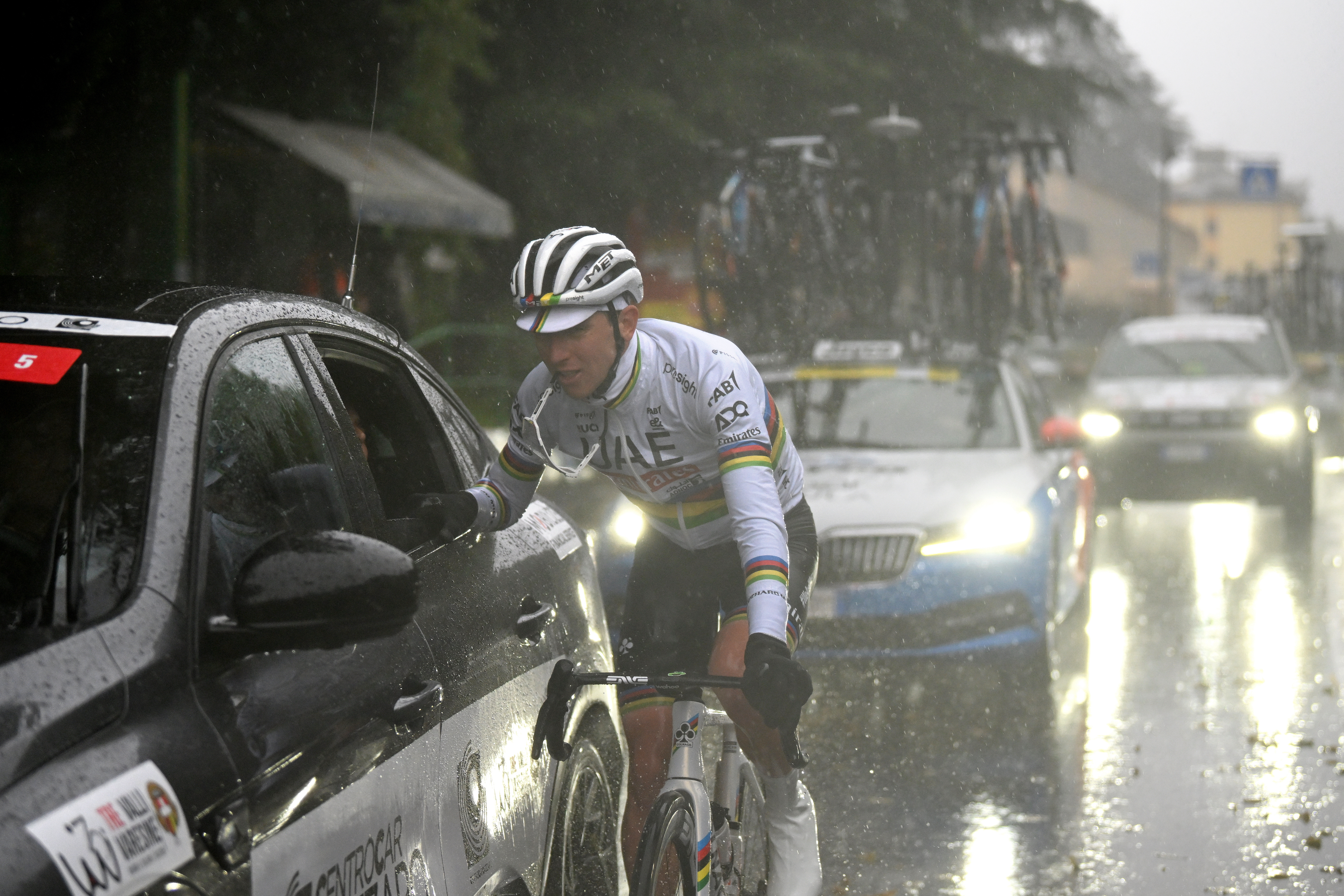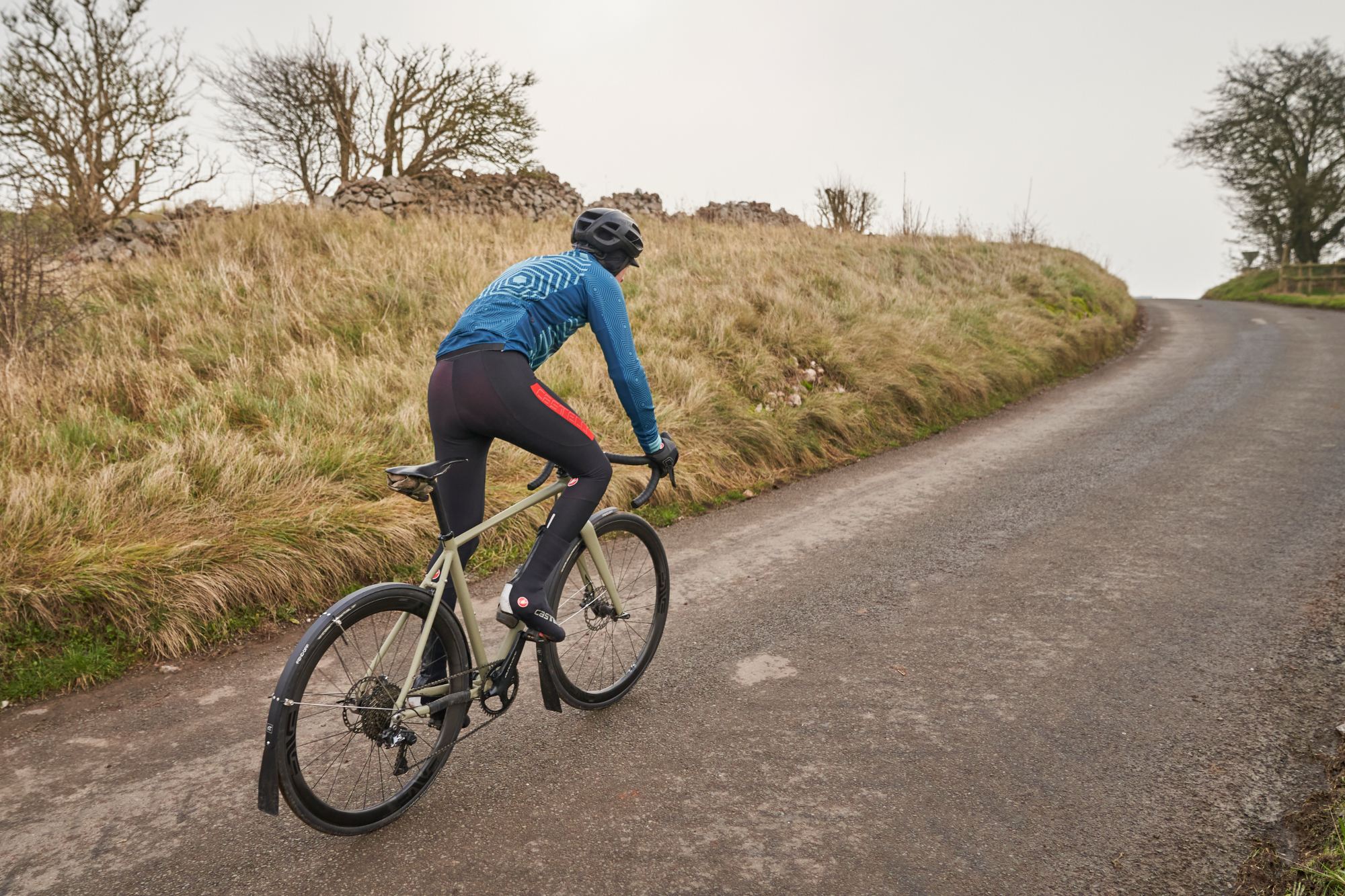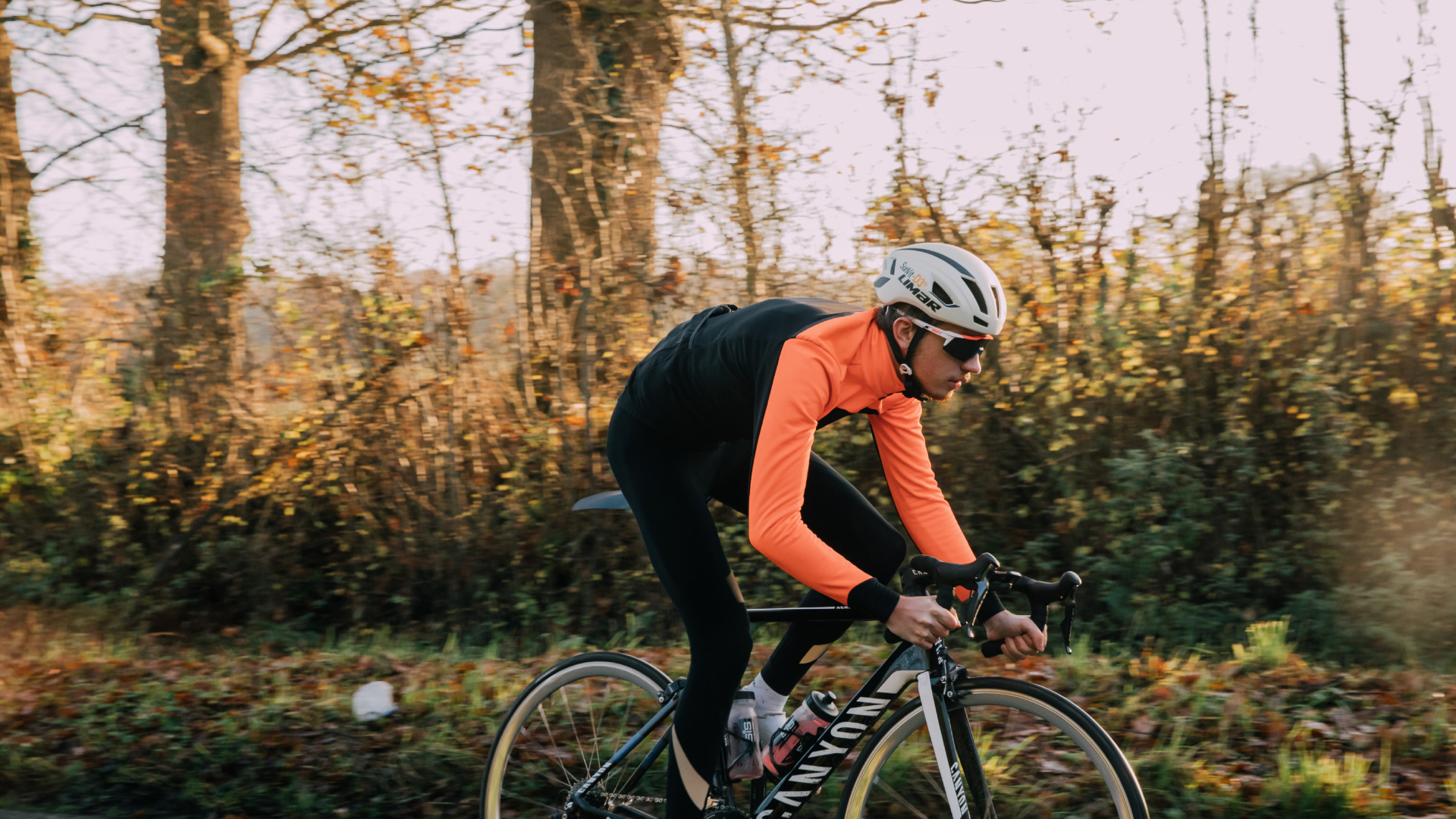Rain shouldn't mean no riding - How to enjoy cycling in downpours
Tre Valli Varesine may have been abandoned in the wet, but we have some tips that will see you through


Tre Valli Varesine in Italy – Tadej Pogačar's final outing before Il Lombardia – was abandoned on Tuesday due to rain and flooding.
With 180-plus riders going at speed in a bunch, not to mention the race infrastructure surrounding them, it seems like a perfectly reasonable move by the organisers of the 1.Pro race.
Abandoning rides is something that those of us living in temperate climates can relate to. It feels that there has been as much staring out of the window at incessant rain as there has been riding.
Unfortunately, though, there has been rather a lot of the latter in recent weeks, with the autumn outlook continuing to look decidedly damp.
If you're not a racer, or training for some sort of specific goal, the standard approach to wet stuff falling from the sky is to bin your ride, or at the very least head into the shed and Watopia where it does indeed rain but you never get wet.
But how long before this approach becomes detrimental? Zwift and other indoor riding platforms such as Rouvy are a great training tool, and there are plenty of people who do the bulk (or even all) of their riding that way.
But outdoor time is important – even wet outdoor time. It helps us maintain circadian rhythms, vitamin D levels and our mental health. A recent survey suggested that we need 67 minutes outdoors daily for optimum functioning. How many indoor workers manage that – especially at this time of the year.
Get The Leadout Newsletter
The latest race content, interviews, features, reviews and expert buying guides, direct to your inbox!
Use your helmet visor (or a casquette)
If you've never ventured off-road, a helmet visor will likely always have been a slightly rubbish looking piece of plastic that you either avoid completely, or chuck in the back of the cupboard as soon as you get your new helmet home.
Let me offer you a new take – it can be a true wet-weather game-changer. Instead of having your face (and even eyeballs) pelted with precipitation, a visor will catch much of that misery-making wet stuff for a far more comfortable ride. Best of all, it is free, to all intents and purposes.
If you don't already own one, we'd go so far as to suggest buying a second lid for bad weather. It may well lower your Cda a touch, but you're unlikely to be pushing the envelope of your top speed on a wet ride anyway.
A different option is the cycling cap or casquette. However, if your helmet is already a snug fit (and it should be), you may find this gives an uncomfortably tight fit. The peak can often be lower than ideal too. On the plus side, it does look fairly pro, if that's the look you're aiming for.

Fit mudguards / fenders
Let's face it, mudguards of almost any kind tend to dial down a bike's desirability factor several notches. But they can make so much positive difference on several levels that they are pretty much a no-brainer for wet weather riding.
Your bike, and clothing, will instantly need less cleaning. Your components will last longer in the face of assault from road grit, and most obviously at the time, you will enjoy your ride considerably more.
Most effective are full-length mudguards, ideally secured using bolts and mudguard eyes for minimum rattle. But even shorter, clip-on 'guards are effective enough to be worth the effort. Given mudguards can be a faff to fit, the ideal – which many of us have – is one 'best' bike for dry weather, and one for winter and the wet – with mudguards.
We all like to look good on the bike and yes, cycling can sometimes turn into a bit of a fashion show. But on a cold, wet, winter's day when sensible people are indoors and everyone else is hidden underneath an umbrella and squinting their way through the rain, no one else cares what your bike looks like. So fit 'guards and enjoy a much cleaner bike and kit and a far more comfortable ride.

Wear 'the right clothing'
'There's no such thing as bad weather, only the wrong clothing'. If it sounds a bit too good to be true to you, you might be right, but it depends what sort of riding you're doing.
If you're hoping to stay perfectly comfortable on a four-hour epic in heavy rain, you're probably asking a bit much. But staying comfortable for an hour or an hour and a half, even in insistent rain, is very possible (especially if you have decent mudguards).
The jacket is perhaps the easiest part to get right. In my experience, even a water-resistant (as opposed to waterproof) softshell will remain comfortable for an hour-plus, when paired with a long-sleeve base layer. A buff or high collar to protect the neck will often be a welcome addition.
The rest is not quite so easy. Start with a bib-tight with a water repellent coating, such as Aqua Repel, while that helmet visor we mentioned earlier can make a big difference to face comfort. That leaves feet and hands, which tend to suffer most.
Choose 'waterproof' designated gloves and overshoes here, with plenty of insulation too, because wet feels colder if it isn't insulated. One of the most common downfalls of the latter is water seeping down the leg and through the top of the overshoe 'cuff'. The best way to mitigate for this is to fit a mudflap to your mudguard, as mentioned above.
Follow these steps and, for the next 90 minutes or so, there really will be, almost, 'no such thing as bad weather'.

Plan your route wisely
The weather, would you believe, is not always the weather. Or, at least, you can feel it very differently, depending on where your route takes you.
Riding in open country on roads that tend to harbour pools of water in the wet is going to expose you to a lot more unwanted wetness, for example, than riding under dense pine canopy on roads (or even trails) that drain well.
Not everyone will have options as varied as this, but it's worth considering whether the ride you originally planned is on the most optimal of trails before you go.
Apps such as Strava, Komoot and Ordnance Survey are ideal for seeking out new routes.
Head indoors
For many of us, indoor riding will be the default option when the weather looks uninspiring, and who are we to knock it? There are some great indoor riding options these days, and plenty of choice as to what your indoor riding looks and feels like.
There are those who choose to do all their winter riding on the indoor trainer as a matter of course, avoiding the cold, the wet, or both at once.
For the rest of us though, one of the main advantages of riding on Zwift in a non-competitive scenario is that it serves as the ideal way to complete a session as planned, even when the weather is at its worst. Of course, it's a very easy way to race too.
There's no need to go long either – a half-hour intense session can provide a great workout, job done. Or, you can join a Zwift group ride for the social element, or log on to Rouvy and enjoy the blue skies of its real-life scenery in augmented reality.
Just don't forget the great outdoors. Its myriad benefits are always worth exploring even in the rain and the cold. Dress well, stay off icy roads, and enjoy.

Thank you for reading 20 articles this month* Join now for unlimited access
Enjoy your first month for just £1 / $1 / €1
*Read 5 free articles per month without a subscription

Join now for unlimited access
Try first month for just £1 / $1 / €1
After cutting his teeth on local and national newspapers, James began at Cycling Weekly as a sub-editor in 2000 when the current office was literally all fields.
Eventually becoming chief sub-editor, in 2016 he switched to the job of full-time writer, and covers news, racing and features.
A lifelong cyclist and cycling fan, James's racing days (and most of his fitness) are now behind him. But he still rides regularly, both on the road and on the gravelly stuff.
-
 Rudy Project Rebel bike helmet review
Rudy Project Rebel bike helmet reviewRebelling against the solid shell oversized helmet fashion, the Rudy Project Rebel goes big on ventilation and breathability, but there is a weight penalty
By Hannah Bussey Published
-
 'I wanted to be world and Olympic champion – my parents made me feel that it was possible': Meet Sophie Capewell and her gold medal-winning mum
'I wanted to be world and Olympic champion – my parents made me feel that it was possible': Meet Sophie Capewell and her gold medal-winning mumSome mothers and daughters make memories together. The world-beating Capewells make history too. Tom Davidson meets the extraordinary duo
By Tom Davidson Published